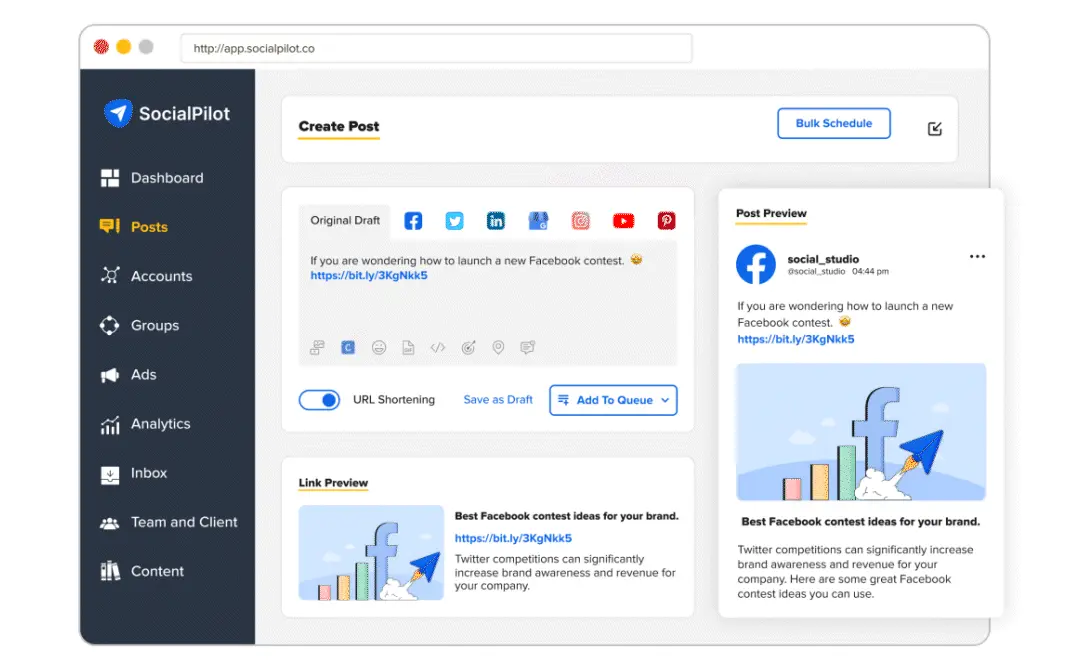The global business process outsourcing industry has a projected phenomenal compound annual growth rate of 9.4% annually until 2030. Client collaboration is familiar in the business world, as it has been the go-to solution for flexible and cost-efficient services. Companies often collaborate with other agencies for marketing projects, IT solutions, audits, etc.
Whether it is a long-term or short-term relationship, agency collaboration can be challenging. The issues of poor communication, unclear goals, distrust, and poor feedback are prevalent, especially in fast-moving industries. However, you can clear the hurdles by implementing a result-driven strategy, as outlined in this article.
These strategies range from establishing clear communication channels to building trust and addressing challenges promptly. They are simple enough to implement for small or large businesses. With that in mind, let’s review what this collaboration entails before hitting the road with strategies.
Understanding Client Collaboration and Agency Collaboration
At its core, client and agency collaboration is about symbiosis – two entities working together for mutual benefit. On one end, we have the client, seeking to leverage external expertise to reach their goals, and on the other, the providing agency, keen on applying their skills and resources to assist the client. Let’s delve a little deeper into these terms:
Client Collaboration:
When a company partners with a client, it steps into a collaborative relationship where each party’s roles and responsibilities are defined with the sole purpose of achieving the client’s objectives. The duration of this collaboration can vary – it could be a short-term project or a long-lasting partnership.
Let’s take social media management as an example. As businesses scramble to keep pace with the rapid evolution of social media, they often seek the help of external experts. This is where client collaboration comes in – a company hires a social media management team to apply their specific skill set and experience in this fast-growing field.
Agency Collaboration:
This type of collaboration is more akin to a partnership, often involving multiple agencies working together, pooling their resources and expertise. The objective could be to foster innovation or tackle a challenging problem.
An excellent example of this is the collaboration between Pepsi and Peeps. In 2021, beverage giant PepsiCo and iconic marshmallow brand Peeps collaborated to produce a limited-edition marshmallow cola for the spring season. The partnership combined Pepsi’s beverage expertise with Peeps’ beloved flavor, creating a unique product that excited their consumer base. The collaboration was a hit, leading to its renewal in 2023.

This exemplifies how brands can innovate through collaboration, leveraging each other’s strengths to offer unique experiences to their customers.
Importance of Collaboration
Collaborations are not formed arbitrarily. If a company has the in-house resources to reach its goals, it typically won’t seek external help. Collaborations are born out of a need for specific expertise or resources. The hiring company not only benefits from the specialized knowledge of the hired team but also their unique approach to problem-solving.
Sometimes, collaborations are formed to augment an existing team. For instance, a company with a small IT team might collaborate with an IT agency to develop a new website. The possibilities are wide-ranging, from creating social media templates to implementing high-end IT solutions.
Cost-effectiveness is another key advantage of collaboration. Setting up an in-house team with the necessary equipment for a project can be more expensive than outsourcing it, especially for long-term projects.
In addition, collaborations can enhance team engagement. Forbes reported a 64% higher retention rate for tasks accomplished through collaborations. Participants also reported lower levels of fatigue and stress.
Key Elements of Successful Client and Agency Collaboration
A successful collaboration goes beyond a signed contract and handshakes. Certain elements need to be in place for the collaboration to truly bear fruit:
- Clear Scope
Success begins when both parties understand the goals of the project. That means having a clear scope of what needs to be done and the extent of execution. The client often sets the scope, but the agency can advise based on the project.
- Clear Communication
Regardless of how comprehensive the written terms are, verbal communication remains paramount. Regular team meetings keep both parties in the loop, fostering understanding.
- Regular Reporting
Reports show progress but can also highlight challenges. Agencies must keep the clients updated with the latest developments in the project. This helps the clients identify if the gain is in the right direction and on schedule.
- Trust
Micromanaging signals a lack of trust in the agency’s ability to deliver. Building trust is essential for a smooth and successful collaboration. For instance, if a client wants to expand their social media presence, they need to trust the agency’s understanding of social media algorithms and strategies. Trust enables the client to step back and let the agency do what they do best – in this case, boost the client’s online presence.
Interesting read: 12 Crucial Social Media Metrics to Track In 2023
8 Strategies for Successful Client Collaboration and Agency Collaboration
While we strive to cover as much ground as possible, these strategies are not do-it-alls. Some things might be specific to your type of collaboration. View these strategies as stepping stones to build upon.
1. Establish Clear Communication Channels
In any collaboration, it’s not just about talking, it’s about making sure what’s said is understood. Clear and effective communication is pivotal in ensuring all parties involved understand their roles, the project’s goals, and the progress being made.
Clear communication can be achieved by setting up routine team meetings, creating dedicated channels for project discussions, and making sure everyone knows who they should report to. Regular updates and check-ins can help prevent misunderstandings and keep the project moving in the right direction. It’s also important to establish a culture where everyone feels comfortable voicing their opinions and concerns.
2. Set Clear Goals and Expectations
Clear and well defined goals and expectations are vital for collaboration successfully. They provide the project”s roadmap, outline what needs to be achieved, by whom, and when.
Everyone involved should understand the project’s objectives and their individual roles and responsibilities in achieving them. This involves defining work scope for each participant, preventing confusion, and ensuring there’s no overlap of duties.
Additionally, goals should must be clear but also realistic, measurable, and aligned with the overall strategy of the organizations involved. As the project progresses, these goals may need to be adjusted in response to new challenges, opportunities, or changing circumstances.
This is a natural part of the collaboration process and should not be viewed negatively. Instead, it’s crucial to communicate these changes effectively to all parties involved, ensuring everyone remains on the same page and adjusts their expectations accordingly. Regular check-ins and progress reviews can help ensure that everyone stays aligned and that the project remains on track.
3. Foster Transparency and Trust
Trust and transparency are the cornerstones of any successful collaboration. Both elements involve honesty, open communication, and a commitment to meeting obligations. Trust is built when all parties demonstrate reliability, consistently fulfilling their responsibilities, and delivering on their promises. It’s about creating a safe environment where everyone can depend on each other to do their part.
Transparency involves being open about everything – resources, progress, challenges, successes, and failures. It requires sharing relevant information in a timely and accurate manner, which in turn helps to build trust. All parties should have a clear understanding of where the project stands at any given time and what resources are available.
However, trust can be fragile, and any form of scandal or mistrust can be detrimental to the collaboration, as exemplified by the breakdown in the relationship between Home Depot and Richards Group followed by the latter’s racist remarks.

Therefore, maintaining transparency and fostering trust should be a continual effort throughout the collaboration. Regular, honest communication, meeting commitments, and acting with integrity are all key to nurturing and preserving trust.
4. Utilize Collaboration Tools and Software
Leveraging the right collaboration tools and software is crucial for efficient and effective teamwork. These tools, distinct from communication channels like email or chat apps, facilitate task management, file sharing, and project tracking. Tools like Asana, Trello, and Basecamp are excellent for managing tasks and workflows, keeping everyone updated on project progress, and ensuring deadlines are met.
Automation tools like Zapier and IFTTT can also be employed to streamline repetitive tasks, freeing up time for more strategic work. For file sharing and storage, cloud-based services like Google Drive and Dropbox provide secure, accessible spaces for team members to access necessary documents and information.
For projects specific to social media management, tools like SocialPilot can be a game-changer.

The tool not only allows for easy team member onboarding and role assignments but also provides features for secure analytics sharing, a content calendar for strategy planning, and a streamlined approval process. For businesses needing more customized solutions, white-label options can provide the necessary flexibility.
Additionally, with the ‘Collaborate on Drafts‘ update , teams can seamlessly work together on content creation in real-time, ensuring ideas are shared, refined, and implemented efficiently.
5. Encourage Feedback and Iteration
Feedback is the lifeblood of any successful project, providing valuable insights into what’s working, what’s not, and what needs to change. In a client-agency collaboration, both sides should feel comfortable providing and receiving feedback. This two-way communication loop allows for continuous improvement and alignment with project goals.
Iteration, the process of refining and improving solutions based on feedback, is particularly critical in areas like IT and product development. The collaboration between Xiaomi and Leica Camera is a perfect example of this.

Their partnership resulted in multiple software iterations and new hardware for the Xiaomi 13 Ultra, indicating a healthy feedback and iteration cycle that led to improved product offerings.
In essence, fostering a culture of feedback and iterative development not only enhances the final product or solution but also strengthens the collaborative relationship by promoting open communication and shared learning.
6. Establish a Positive Collaborative Culture
Cultivating a positive culture within a client collaboration and agency collaboration is fundamental. A positive collaborative culture is one where team members are enthusiastic, motivated, and feel a genuine sense of belonging and purpose. It’s an environment that fosters mutual respect, open communication, and shared responsibility.
Creating such a culture requires deliberate effort. It involves setting the tone for collaboration from the get-go, encouraging team members to share ideas freely, respecting diverse viewpoints, and celebrating milestones and successes together. It also means addressing conflicts or issues constructively and promptly to maintain trust and rapport among the team.
The importance of a positive culture is evident in the case of Ye and Gap’s partnership. Their collaboration ended in 2022 due to Gap’s failure to sell Yeezy products in its namesake stores. Despite Gap’s hope that the partnership would help revive its declining standing in the fashion industry, the lack of a supportive and positive culture led to its dissolution.
Interesting read: 8 Ways to Nail Social Media Collaboration Within Your Marketing Team
7. Ensure Accountability and Responsibility
In any collaborative effort, maintaining a clear sense of accountability and responsibility is paramount. Each party involved should understand their roles and be ready to fulfill their obligations in a timely and efficient manner. This involves setting clear expectations, assigning tasks thoughtfully, and tracking progress regularly.
A shining example of this is the collaboration between Apple and IBM in 2014. The two tech giants came together, each with distinct responsibilities, to to bring IBM’s big data and analytics capabilities to iPhone and iPad, leading to successful outcomes.
8. Address Challenges Promptly
Challenges and roadblocks are inevitable in any project, but it’s how you respond that makes a difference. Addressing issues promptly and constructively can prevent minor hiccups from escalating into major problems. It’s essential to maintain an open dialogue, encourage problem-solving attitudes, and provide support to overcome challenges.
Conclusion
In the dynamic and interconnected world of business, client and agency collaboration is more than a necessity; it’s a strategic tool.
When executed properly, it unlocks innovation, optimizes resource use, and drives growth. This requires clear communication, defined goals, transparency, the right tools, feedback mechanisms, a positive culture, accountability, and prompt problem-solving. The journey may be challenging, but the rewards are worth it.
So, embrace collaboration, nurture it with the right strategies, and reap the benefits of a successful partnership.




